Update 2020-04-14: Correction of wrong stand column diameter
This is an inside review of the Zeiss Stemi SV8 - a CMO-type stereo zoom microscope. Also a warning right at the beginning: Zeiss used a natural material as a lens cement that seems prone to deterioration. Many SV8 microscopes and other Zeiss optics from the era suffer from delaminated lenses that may severely decrease image quality. Check out this thread on the German mikroskopie-forum.de for more info on the issue (including sample images).
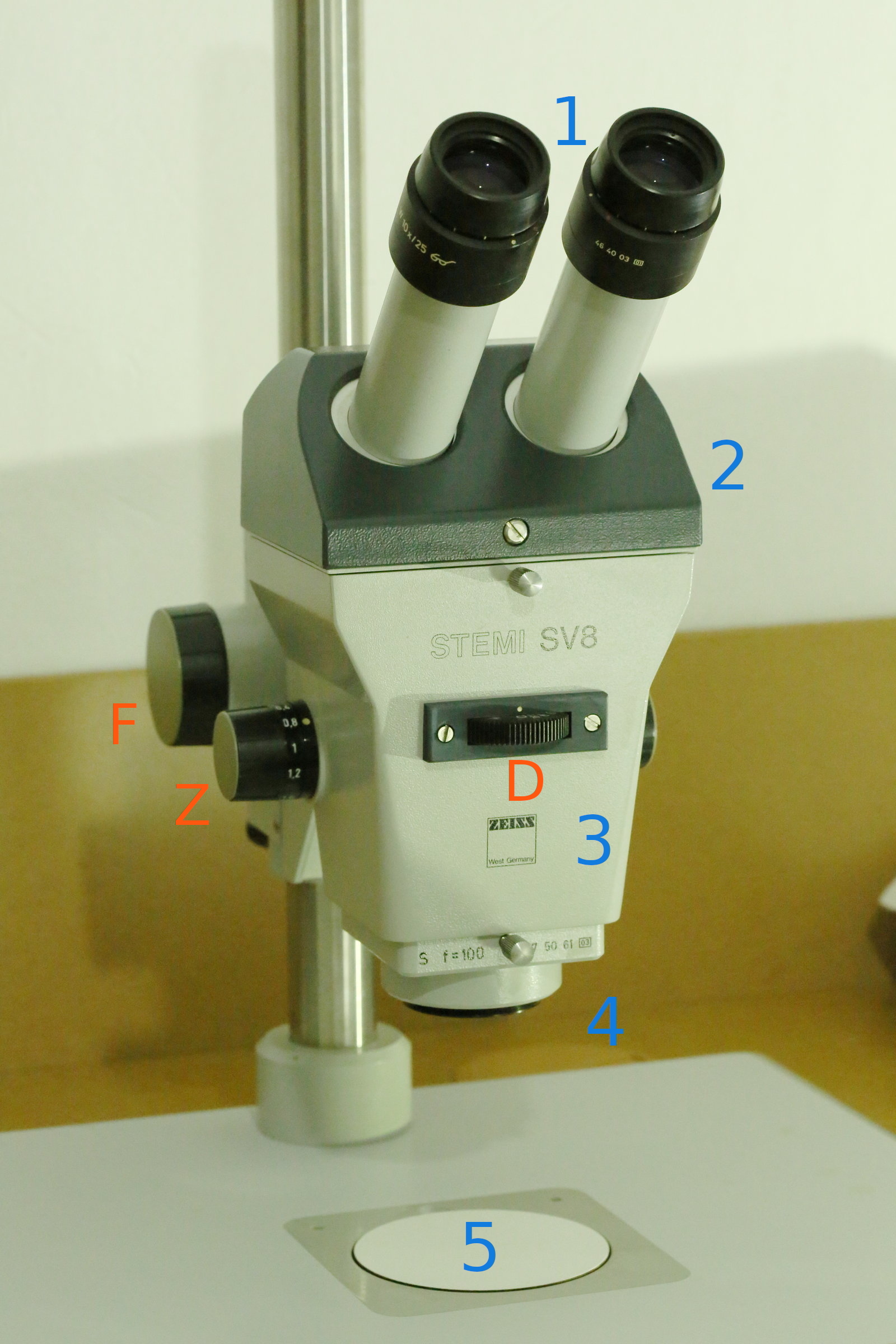
The whole design is quite boxy, even tank-like, e.g. the binocular head (2) joins the body (3) without leaving a gap. The body features the usual Zoom and Focus knobs as well as a Diaphragm wheel for modifying the depth of field (e.g. if used with a phototube). The objective (4) is an uncommon one as it is square-shaped and thus matches the microscope´s overall design. The stand and base (5) were available in different configurations. Nikon and Olympus stands with 32mm columns are compatible by the way...just in case you have one...
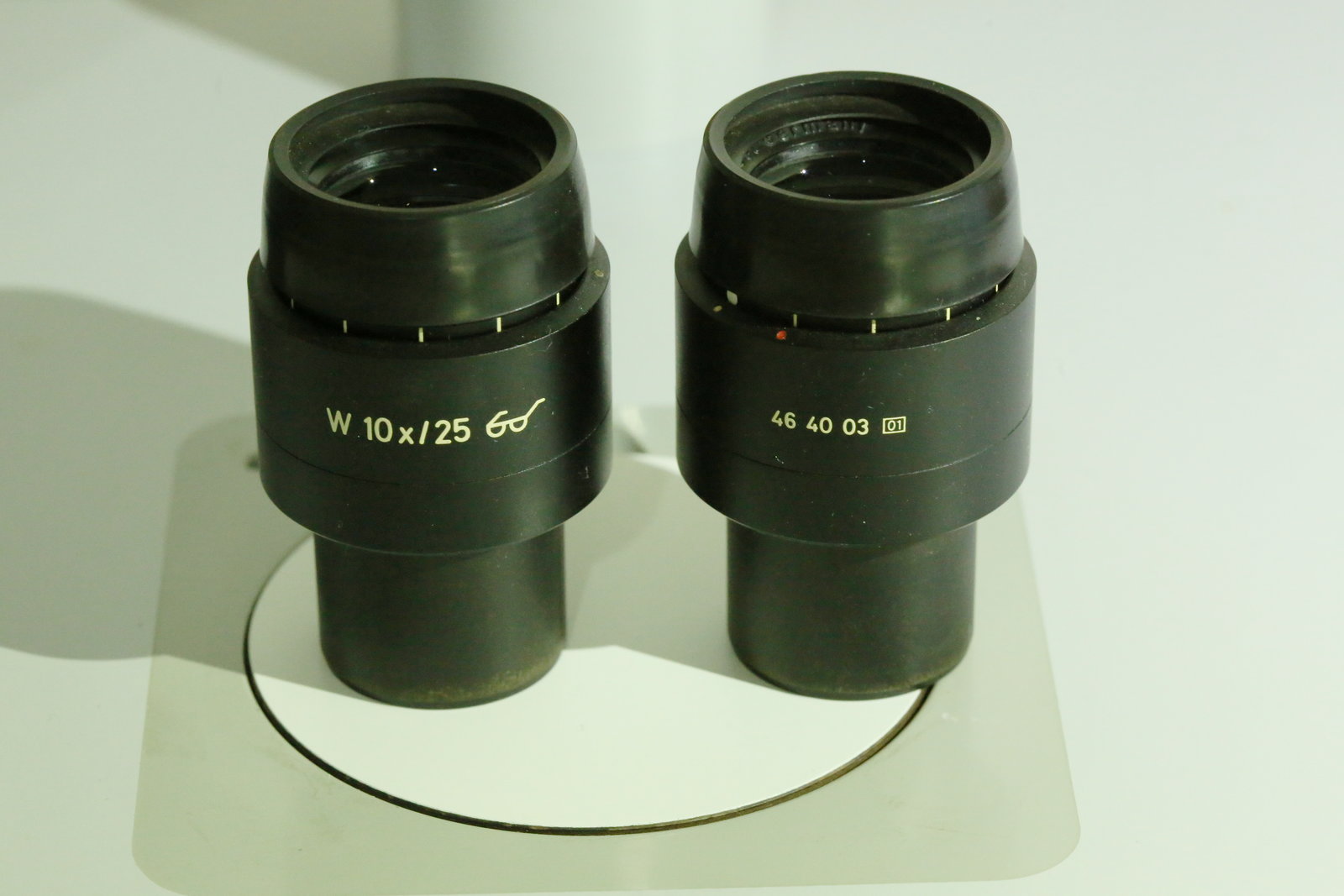
The eyepiece tubes (1) are most often equipped with Zeiss W10x/25 eyepieces (Zeiss article nr. 464003). If they are without optical issues, these are excellent 25mm ultra wide field eyepieces.
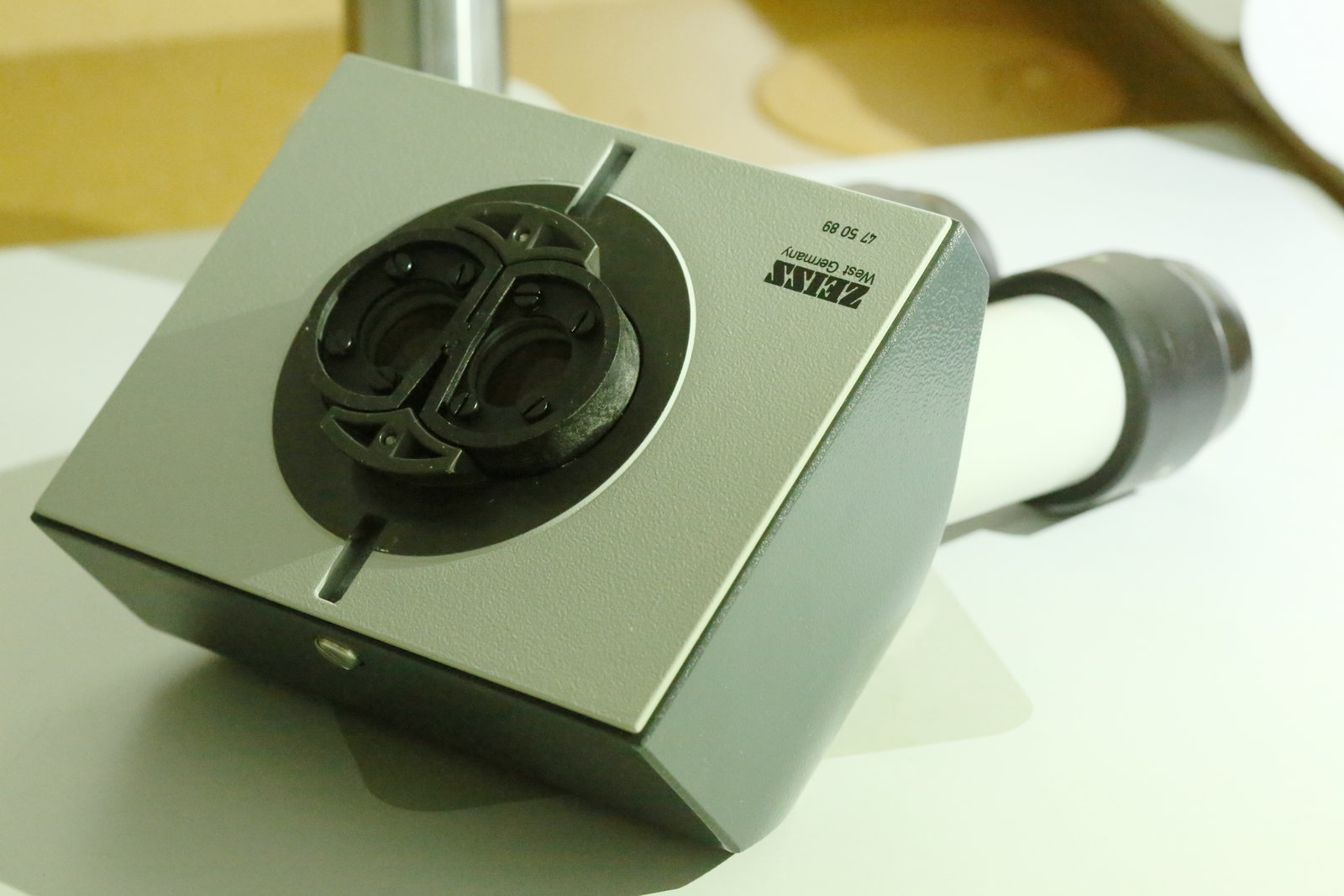
The binocular tube - part number 475089 - as seen from below.
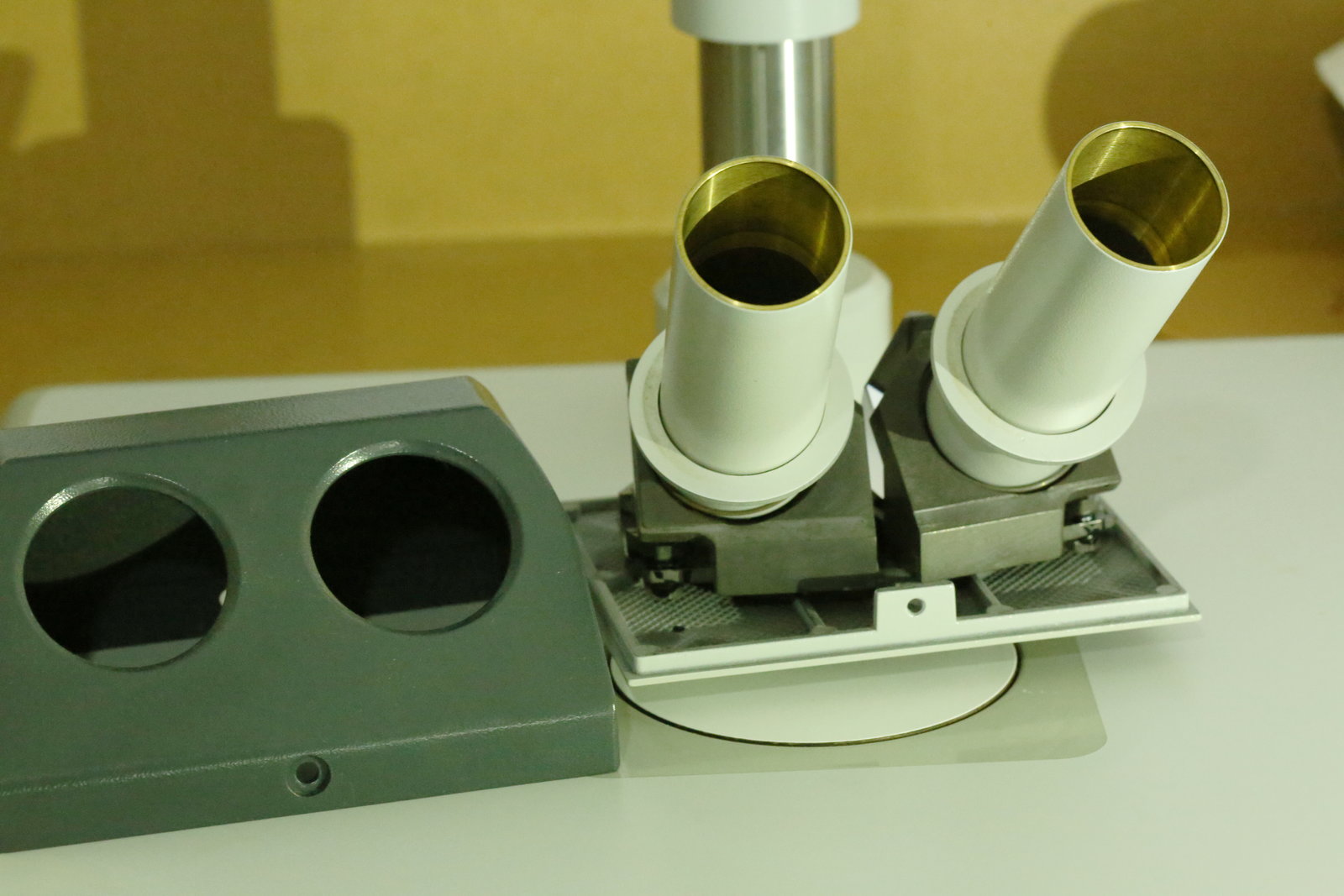
It can be opened by removing the two screws on its front and back.

The prisms and optics inside are protected from dust by spring-loaded discs around the tubes. This way eye-distance adjustments are a breeze, too.
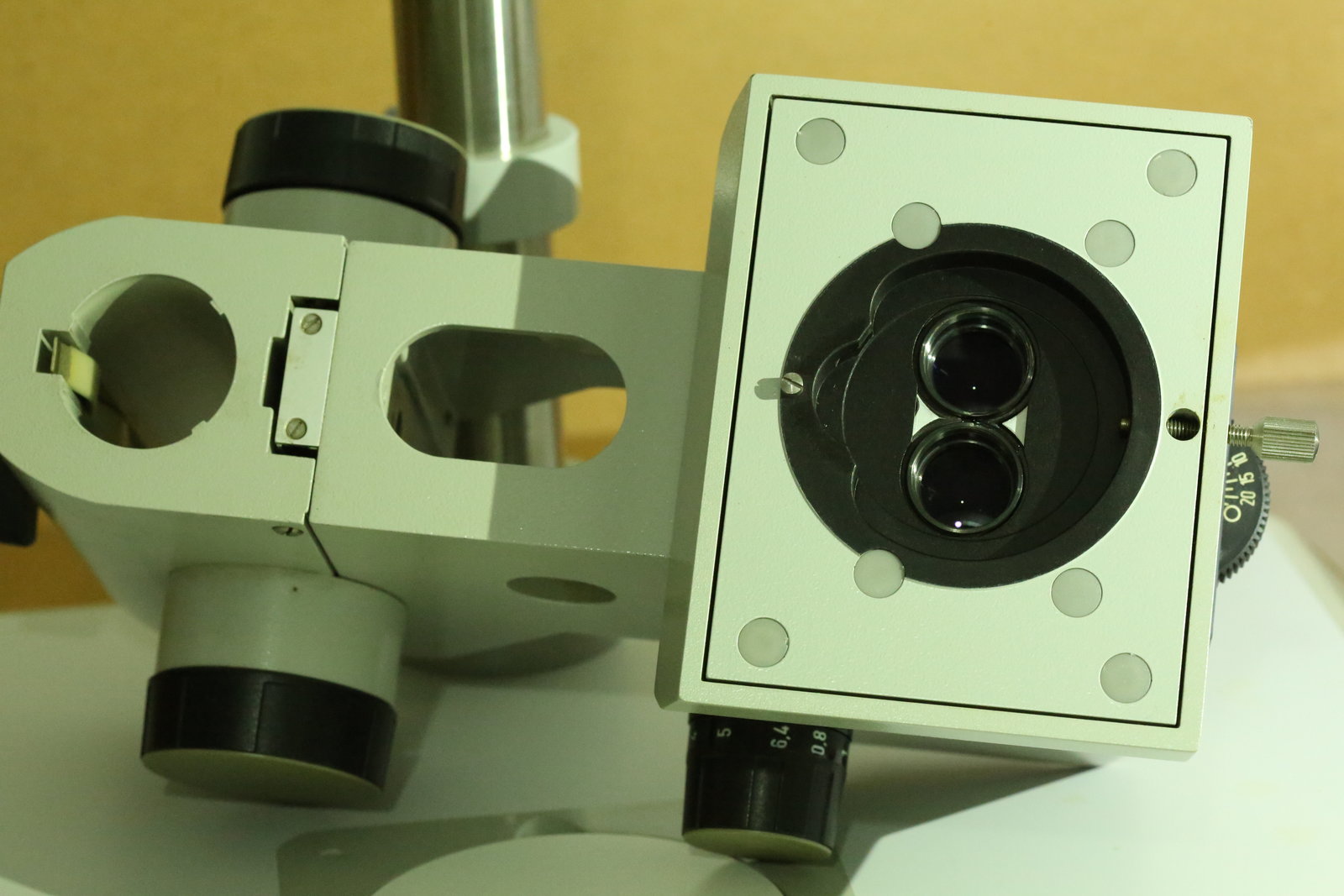
The zoom body is part number 475057 and quite a unique construction with a lens system which is immersed into the outer case (thus it is a very clean, dust-protected design with hardly any screws visible when the binotube is in place). The 8x-zoom action ranges between 0.8x and 6.4x magnifications (i.e. 8x - 64x with standard 10x eyepieces).
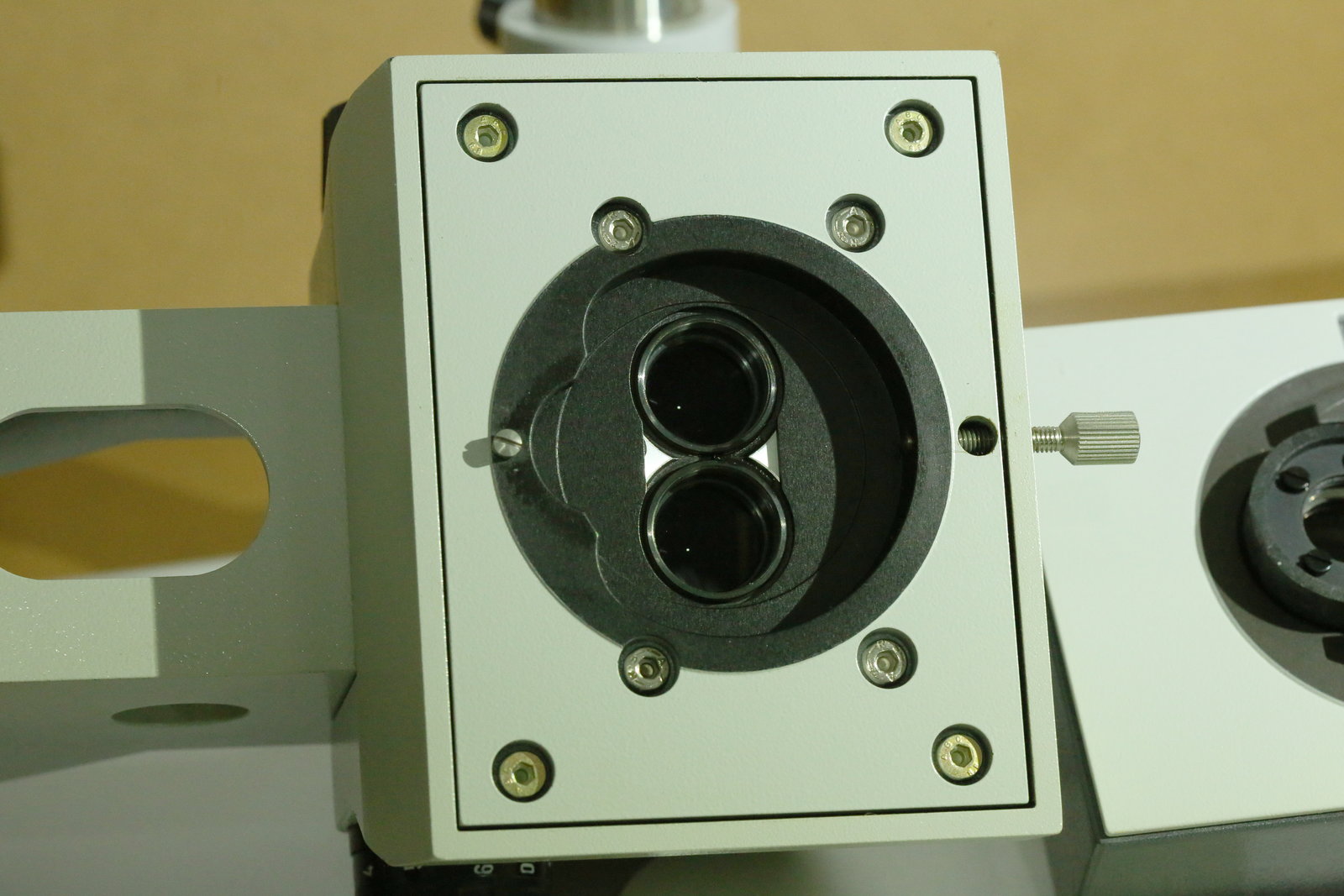
Screws are inbus - we remove only the four outer ones (the four inner screws don´t need to be removed).
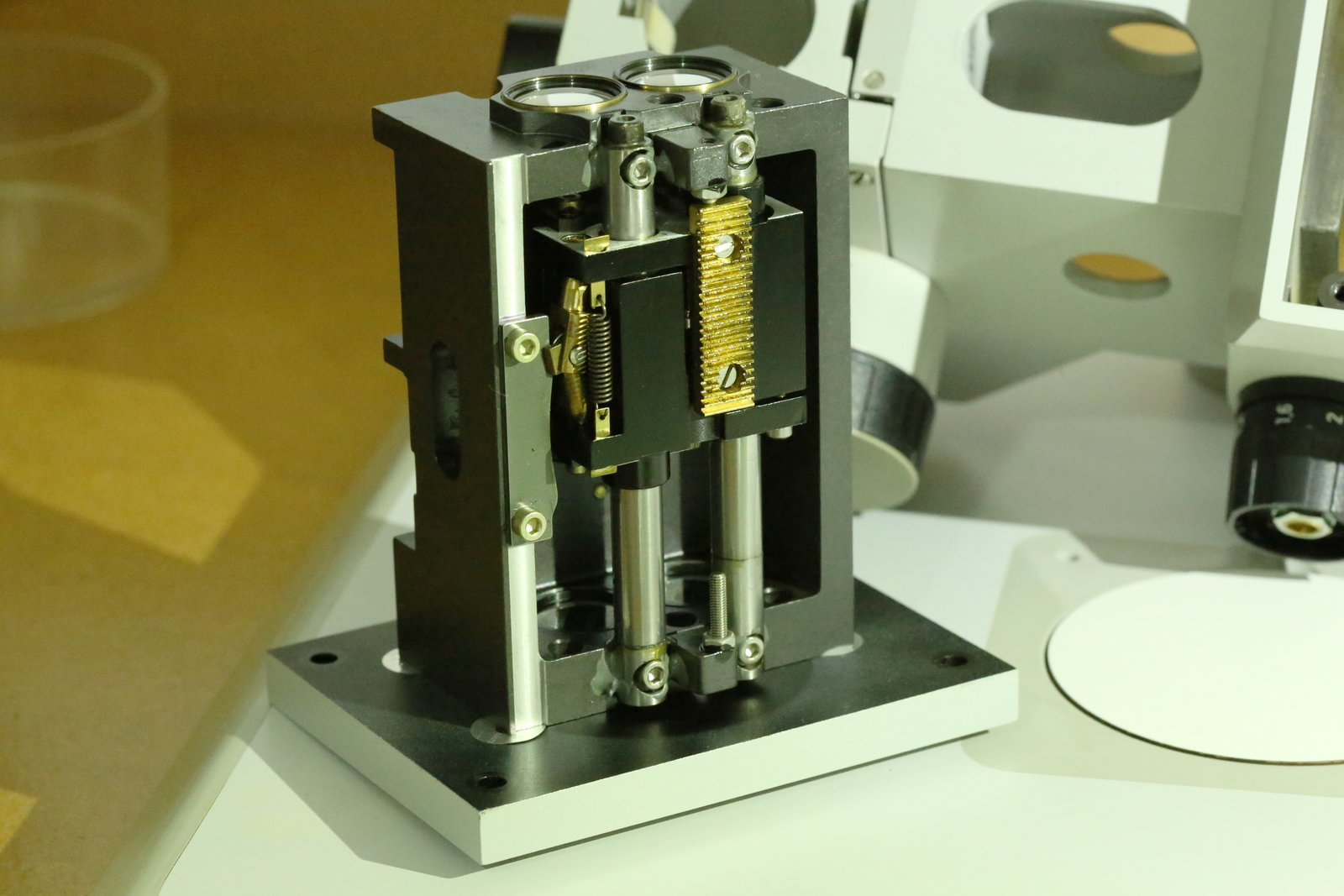
Then the lens system can be lifted out of the case.

Regarding lighting the zoom body has an integrated 1970s-style orange halogen spot. This lamp sucks pretty much by today's standards.
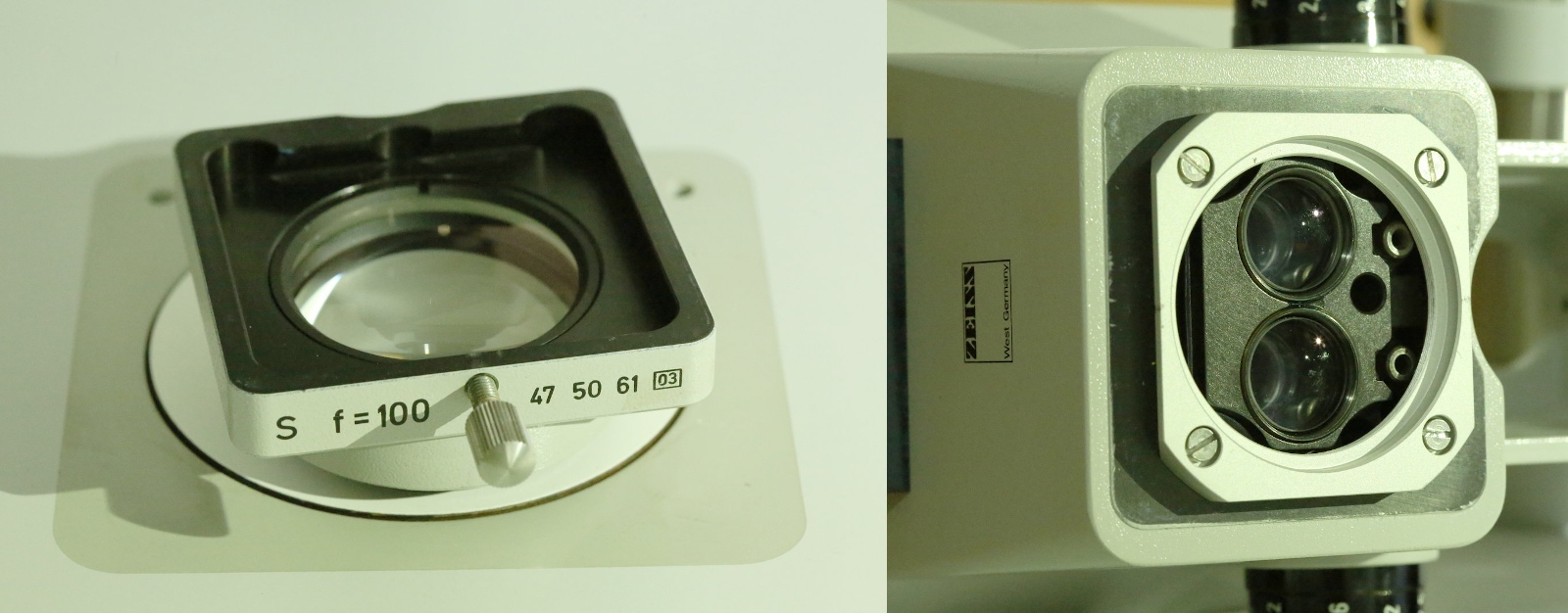
The SV8's default configuration came with the objective 475061 (S f=100) - a low-profile 1x objective solution with significant spheric and chromatic aberrations. The "flat" lens was a cheap and (probably) deliberate decision to allow the body-integrated spotlight to shine its light directly on the base without casting shadows. This way the metal body could also be used for heat dissipation and protection (and a bright light generated lots of heat back then...).
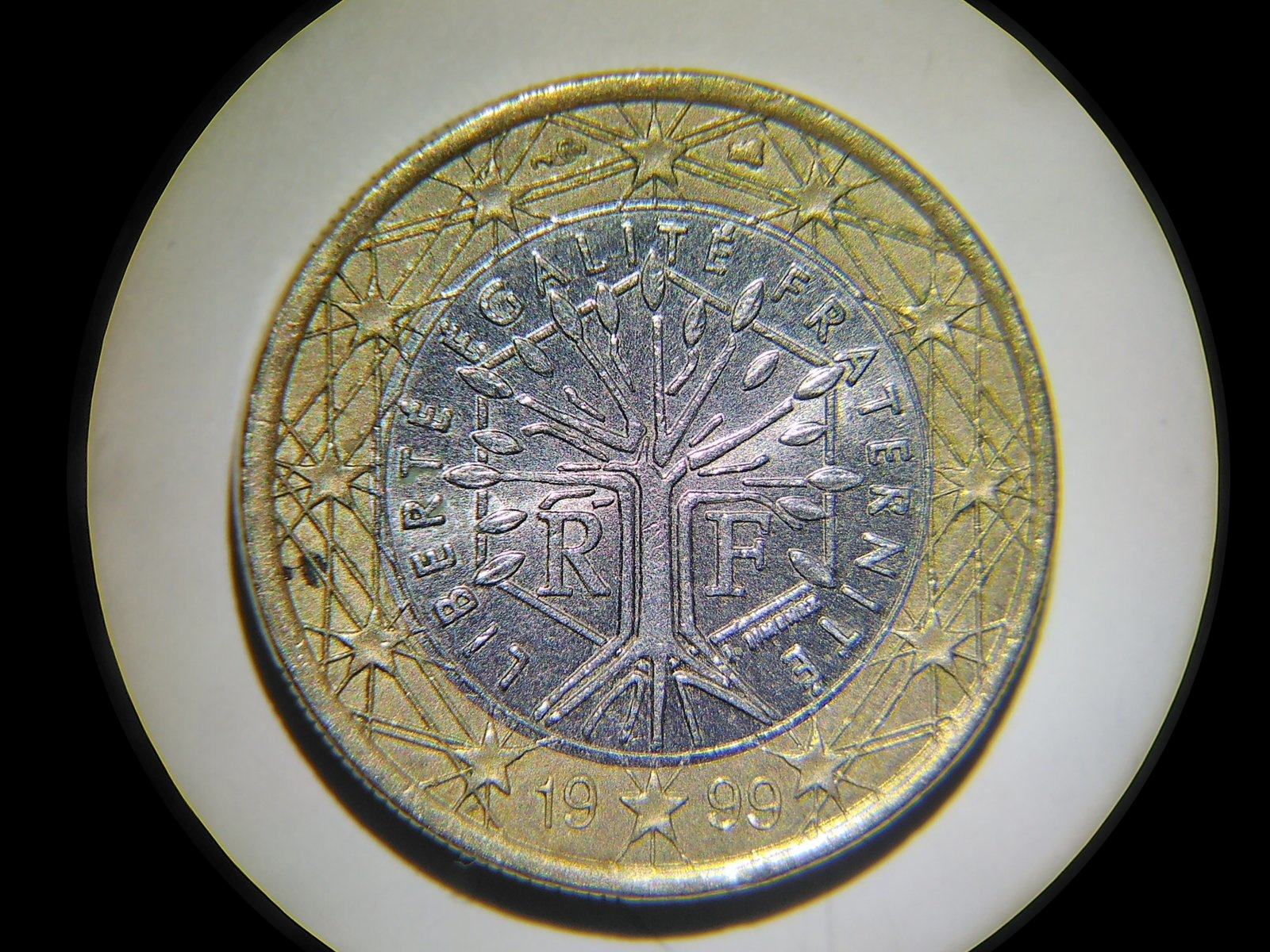
This through-eyepiece shot of a 1€ coin shows these effects. While the silver part in the center is completely sharp, the golden nickel-brass rim is already out of focus.
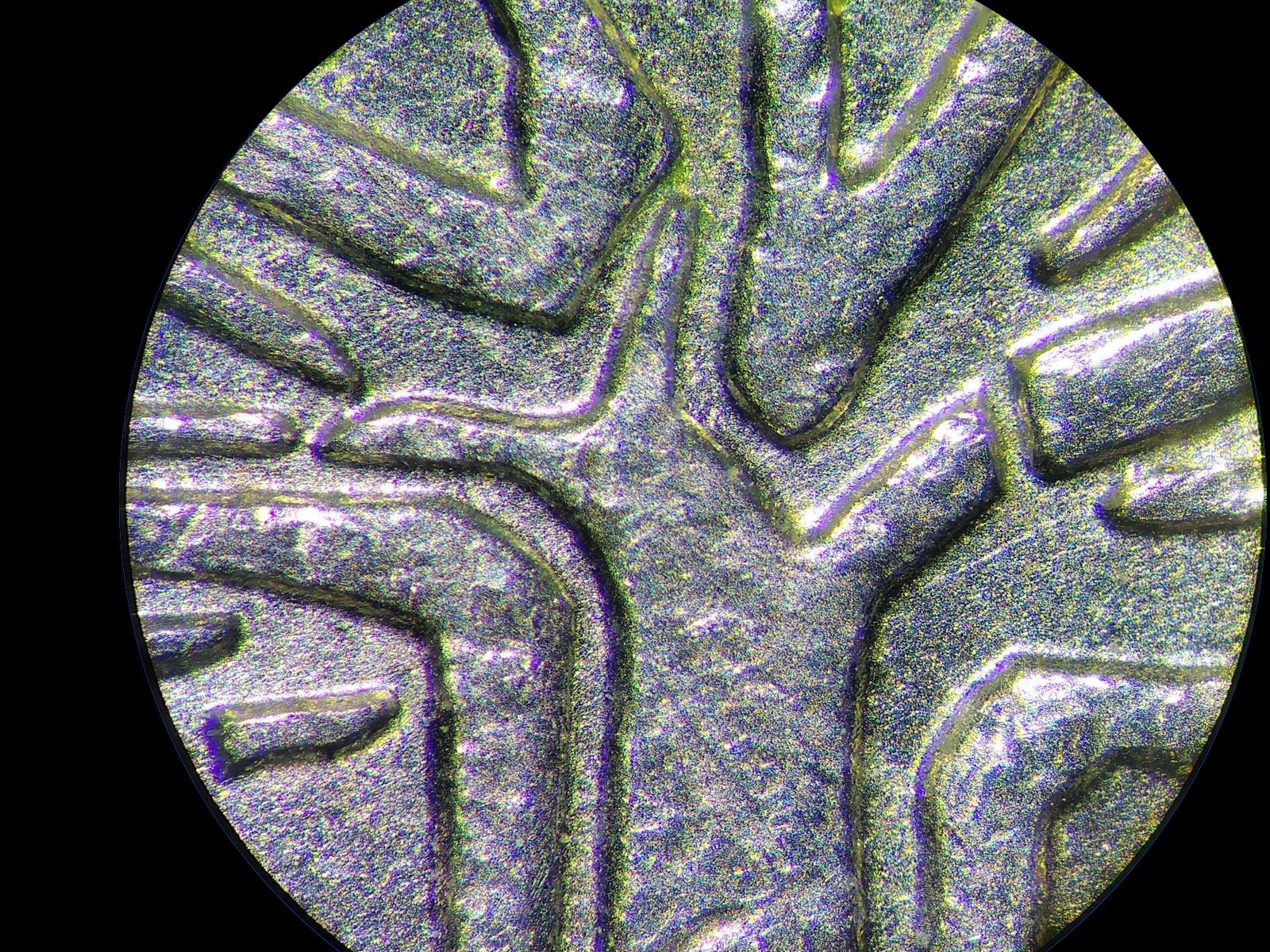
Zoomed in to the maximum, we see the typical purple fringing.

Finally a shot of the centimeter scale of a ruler (the orange line has been added to highlight the issue). Here, we observe marginal distortions of the image (the scale numbers are perfectly aligned in reality and would line up seen in a planachromatically corrected objective).
Verdict
Basically, the Zeiss Stemi SV8 has it all: A rigid full-metal body, sturdy mechanics and great optical quality where it matters. What lets it down a bit, are two things:
There are the "Sword of Damocles"-like optical delamination issues that can just arise over time without any warning and that leave you with a bricked microscope in a worst-case scenario (although I have a feeling that the problem affects the ealier 1970s-built stemis, whereas later ones from the 1980s might be on the safe side).
And then there´s the limited optical quality of the default objective. However, this is a flaw that could be dealt with. With planachromatic optics the SV8 would in principle be just as capable as the Wild M8 (at least in my opinion). And with its square-shaped objective socket - a design that screams for 3d-printed adapters - it should actually be feasible to combine the SV8 with plana(po)chromatic objectives from other microscope producers. Maybe we might see something like this in the future :-)
greetings noq2
Comments